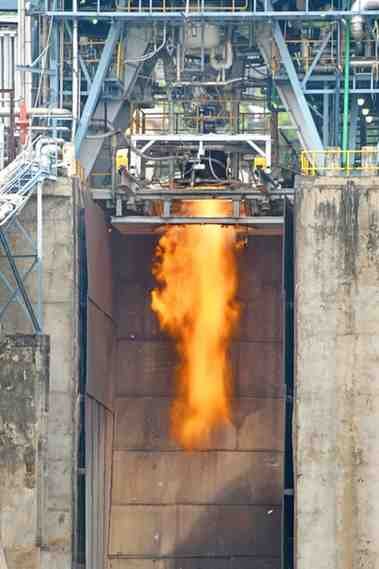The sea level hot test of CE20 Cryogenic Engine featuring a nozzle area ratio of 100 by Indian Space Research Organisation (ISRO) at ISRO Propulsion Complex, Mahendragiri, Tamil Nadu on November 29. This cryogenic engine has successfully powered the upper stage in six LVM3 missions to date. Recently, it was also qualified for the Gaganyaan mission, operating at an enhanced thrust level of 20 tonnes.
Due to the high area ratio nozzle posing an exit pressure of approx 50bar, there were many challenges including the flow separation inside the nozzle leading to severe vibrations and thermal problems at the flow separation plane leading to possible mechanical damage of the nozzle. This led to tests being performed at the High-altitude Test (HAT) facility to mitigate the complications which further added complexity to the testing procedure. Further, an innovative Nozzle Protection System was devised to reduce these complications which also led to cost-effective and less complex procedures.
A restart of a cryogenic engine is a complex process with vacuum ignition without nozzle closure and use of multi-element igniter posing a major threat. The multi-element igniter performance was also evaluated in this test where only the first element was activated while the health of the other two elements was monitored.
During this test, both the engine and facility performed normally, achieving the expected engine performance parameters. The indigenous CE20 cryogenic engine, developed by ISRO’s Liquid Propulsion Systems Centre, powers the upper stage of the LVM3 launch vehicle and has been validated for operation at a thrust level of 19 tonnes.








